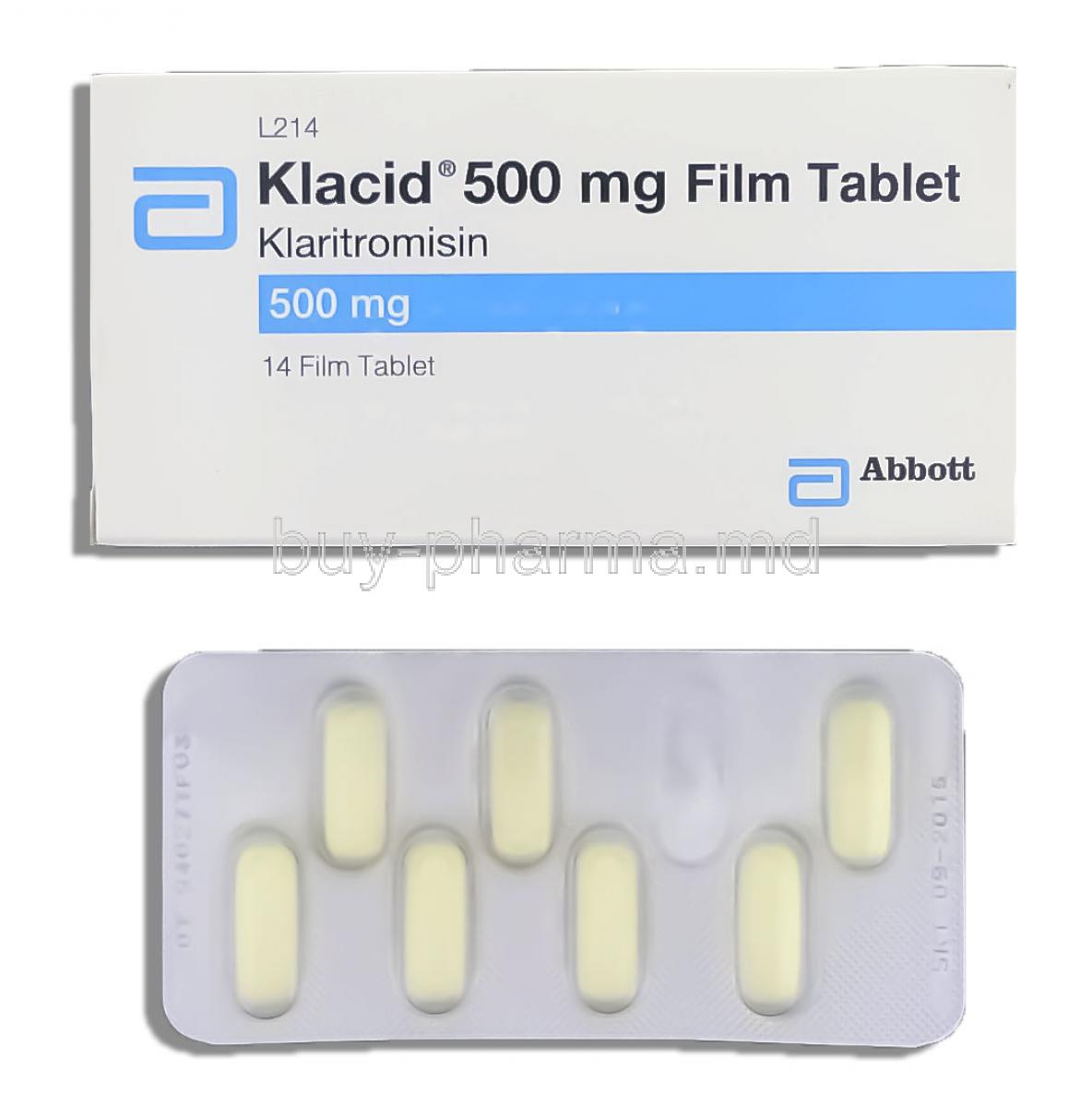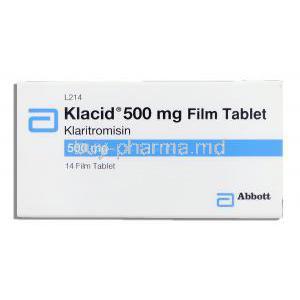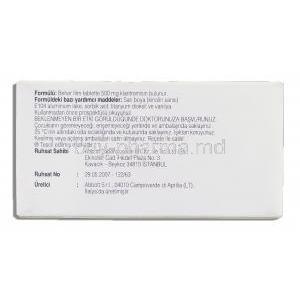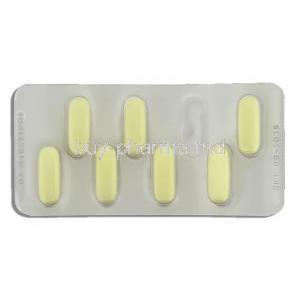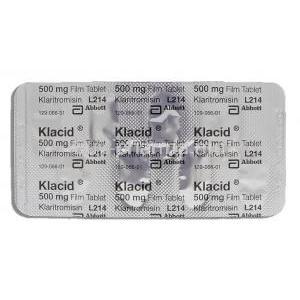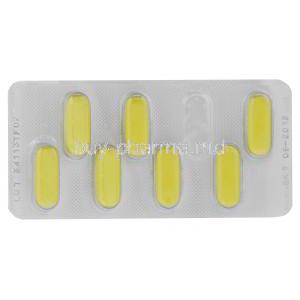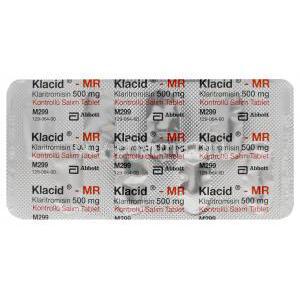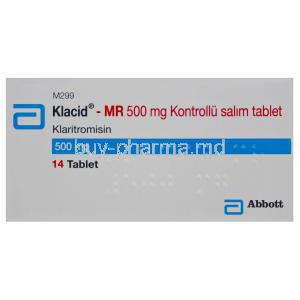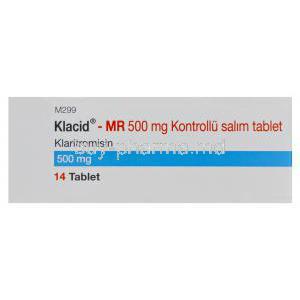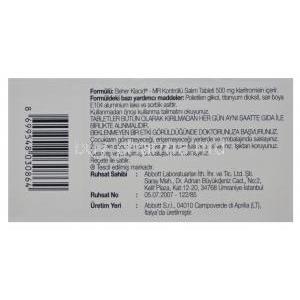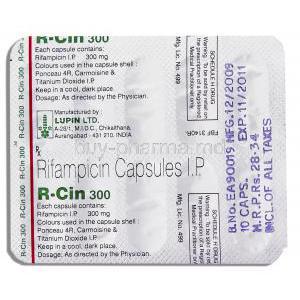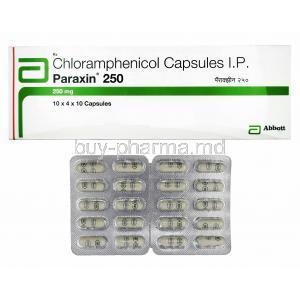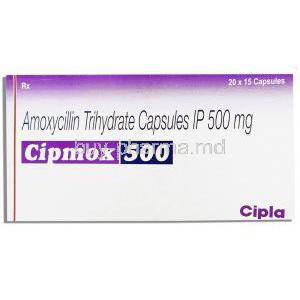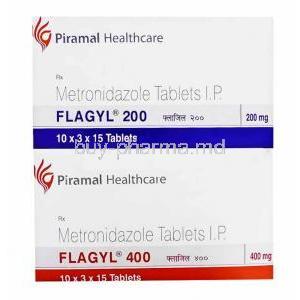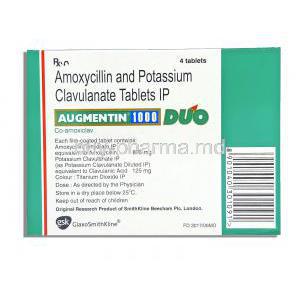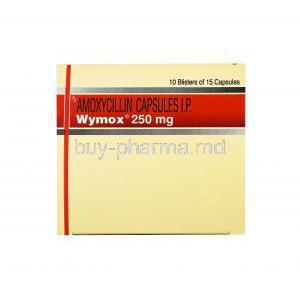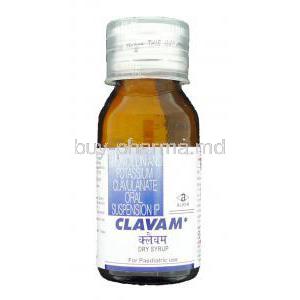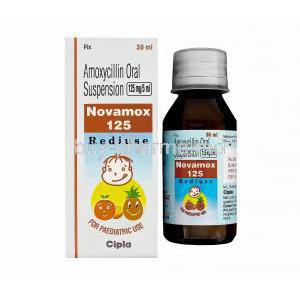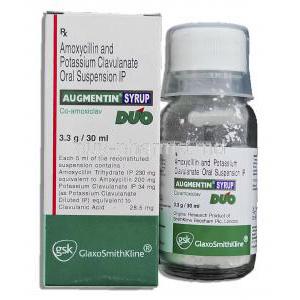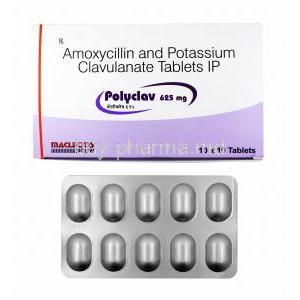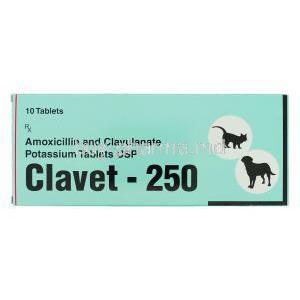Klacid
- Introduction
- Uses of Klacid
- How Klacid Works
- Off-Label Uses of Klacid
- Dosage and Administration
- Composition of Klacid
- Storage Recommendations for Klacid
- Interactions with Other Drugs and Substances
- Side Effects of Klacid
- Common Side Effects
- Warnings and Contraindications
- Careful Administration
- Important Precautions
- Administration to the Elderly
- Administration to Pregnant Women and Nursing Mothers
- Administration to Children
- Over Dosage of Klacid
- Handling Precautions
Introduction
Historical background of Klacid
Klacid or clarithromycin holds a position in the history of antibiotic discovery. It was developed in the 1970s by synthesizing erythromycin and later made available in the 1990s. This semi-synthetic macrolide antibiotic quickly became a tool in medicine because of its effectiveness against a wide range of bacteria.
Overview of its medical significance
Klacid's significance in modern medicine cannot be overstated. As a potent bacteriostatic agent, it impedes the growth of many bacterial pathogens, especially those responsible for respiratory and skin infections. Furthermore, its resilience against antibiotic-resistant strains has bolstered its standing among health professionals.
Uses of Klacid
Primary indications for Klacid usage
Klacid (clarithromycin) is a macrolide antibiotic that is used to treat a variety of bacterial infections 1. It is indicated for the treatment of respiratory infections such as bronchitis and pneumonia 23, infections of the skin and soft tissues such as impetigo, cellulitis, and erysipelas 24, and middle ear infections (otitis media) 56. Klacid is also used in combination with other medications to eradicate Helicobacter pylori, a bacterium that causes stomach ulcers 278.
1: Drugs.com 2: RxList 5: Mayo Clinic 6: UpToDate 4: Children’s Health Queensland 3: Medsafe 7: myVMC 8: MIMS Malaysia
Comparison with other antibiotics in its class
Compared to similar medications, Klacid demonstrates better absorption by the body and a longer duration of action. Unlike antibiotics, in the macrolide family, Klacid has a metabolic process that results in fewer digestive system side effects and less likelihood of interacting with other drugs.
How Klacid Works
Mechanism of action against bacterial pathogens
Klacid works by blocking the production of proteins in bacteria. It does this by attaching to a part of the bacteria ribosome called the 50S subunit. This prevents the bacteria from elongating peptide chains, which stops them from reproducing and growing successfully.
Factors affecting its efficacy
Some factors can affect the effectiveness of Klacid: 1. The specific bacterial. Its inherent resistance to the medication. 2. The. Resilience of the patient's immune system. 3. Other medications taken alongside Klacid that could potentially interfere with its metabolism. These factors can potentially impact how well Klacid works in treating infections.
Off-Label Uses of Klacid
Recognized off-label applications
Klacid is also used off-label to treat Lyme disease 3 and as prophylaxis against Mycobacterium avium complex (MAC) in HIV patients with CD4 lymphocyte counts of less than 75 cells/cubic mm 4.
1: Drugs.com 4: healthdirect 2: RxList 3: Medscape : Mayo Clinic : UpToDate : Children’s Health Queensland : Medsafe.
Studies supporting these off-label uses
Studies based on real-world observations have shed light on the effectiveness of Klacid in these areas. For example, when it comes to Lyme disease, it has been noted that Klacid can help reduce the severity of the illness, especially if it is given on.
Dosage and Administration
Recommended dosage for various infections
The dosage requirements depend on the infection being treated. For tract infections, the recommended dose is 250 500mg taken every 12 hours. A dosage of 500mg every 8 hours is advised to eradicate Helicobacter pylori. For skin infections, the recommended dose is 250mg taken every 12 hours.
Factors influencing dose adjustments
It is crucial to make changes in dosage under certain circumstances, such as when there is a renal impairment or when other drugs that impact the metabolism of Klacid are being used concurrently.
Route of administration
Klacid can be administered orally or intravenously, contingent on the severity of the infection and the patient's clinical status.
Composition of Klacid
Active ingredients and their proportions
The main component of Klacid is clarithromycin. Depending on the formulation, the tablets may come in two strengths, either 250mg or 500mg.

List of excipients and their roles
These compounds, such as cellulose, povidone, and magnesium stearate, are inactive. Play a role in facilitating drug delivery. Their main functions are to maintain the stability of the drugs and improve their absorption into the body.
Storage Recommendations for Klacid
Optimal temperature and conditions
Shelf life and expiration considerations
Klacid typically remains effective for around 2 to 3 years from its manufacture date. However, after this timeframe, its effectiveness may be. It might not provide the expected therapeutic advantages.
Interactions with Other Drugs and Substances
Common drugs that may interact with Klacid
Certain drugs can potentiate or mitigate Klacid's efficacy, such as:
- Statins, like simvastatin
- Antiarrhythmics, such as amiodarone
- Antiretrovirals, for instance, ritonavir
Potential outcomes of these interactions
Interactions between drugs can potentially lead to increased side effects, reduced effectiveness of the treatment, or changes in the levels of both medications in the bloodstream.
Side Effects of Klacid
Overview of potential side effects
Although Klacid is generally well tolerated, there can be some side effects that may arise. These can include disturbances, headaches, and changes in how things taste.
Frequency of these side effects in populations
Digestive issues are standard, occurring in 10% of people who use the medication. Less common side effects include headaches and changes in taste, which affect around 1 2% of individuals taking the drug.
Common Side Effects
Most frequently reported side effects
Similar to antibiotics, Klacid may have some potential side effects. The frequently reported ones include gastrointestinal issues like nausea and diarrhea changes, taste perception, headaches, and mild skin irritations or rashes.
Management and mitigation strategies
To help with or handle these side effects, If you experience problems, taking Klacid with a meal might be helpful. For headaches, you can try using over-the-counter pain relievers to relieve the pain. If you have skin reactions, you should stop taking the medication and consult a doctor.
Warnings and Contraindications
Conditions or factors that contraindicate Klacid use
Klacid may not be suitable for everyone. It is contraindicated in cases of known hypersensitivity to macrolide antibiotics. When used concurrently with certain medications, such as specific statins and antiarrhythmics.
Potential risks and precautions
When you use Klacid, it can cause changes in your liver enzymes, so it's important to have monitoring. It could also potentially worsen symptoms of myasthenia gravis. Before starting treatment, share your medical history with your healthcare provider.
Careful Administration
Special considerations for certain patient populations
Patients with liver or kidney problems may require changes in their dosage and careful monitoring.
Monitoring and assessment during treatment
It is advisable to check the functioning of the liver and kidneys, especially during long-term treatments. Additionally, it is essential to keep an eye out for any indications of fungal infections that may occur alongside the primary treatment.
Important Precautions
Preventing misuse and overuse
It is crucial to prioritize stewardship; Only take Klacid when prescribed by a healthcare provider. Make sure to finish the course of treatment even if your symptoms improve.
Adjustments for patients with other health conditions
People who have heart rhythm abnormalities, liver conditions, or imbalances in their levels need to be given special care and may require different treatment options or extra monitoring.
Administration to the Elderly
Dosage adjustments and considerations
The elderly often exhibit altered pharmacokinetics. Thus, a reduced dosage or extended dosing interval might be prudent to prevent accumulative effects.
Monitoring for adverse reactions
Given the possibility of interactions between medications and the physical changes that occur as people age it is extremely important to carefully monitor for any adverse reactions in older populations.
Administration to Pregnant Women and Nursing Mothers
Potential risks and benefits
Although there is no evidence linking Klacid to harm for the unborn baby, it is essential to exercise caution when using it during pregnancy. It's crucial to consider the advantages of its therapeutic effects while weighing any potential risks.
Recommendations and precautions
Nursing mothers should be informed about the possibility of Klacid being passed into breast milk, which could potentially have an impact on the baby. It is important to seek advice, from healthcare experts.
Administration to Children
Age-specific dosage recommendations
Pediatric medication doses are frequently adjusted according to a child's weight to ensure therapeutic levels while minimizing the risk of negative impacts.
Potential side effects unique to pediatric population
Children may encounter side effects, such as irritability or disruptions in their sleep. It is essential to report and discuss these with a pediatrician.
Over Dosage of Klacid
Symptoms of overdose
Consuming much can lead to serious digestive issues, dizziness, and possible harm to the liver.
Immediate actions and antidote if available
If you suspect an overdose, it's vital to seek medical help. The primary approach to managing this situation is through lavage and providing supportive care, as no specific antidote is currently available.
Handling Precautions
Safe handling and disposal
Make sure to keep Klacid in its container out of the reach of children. Disposing of unused medications according to local guidelines is essential to protect the environment from contamination.
Recommendations for accidental spill or exposure
If there is a spill make sure to wear gloves and clean the area thoroughly. If you accidentally swallow it or experience any skin reactions after being exposed, seek advice right away.

